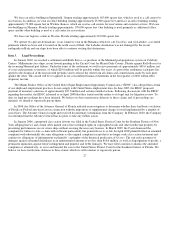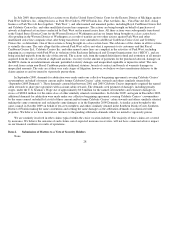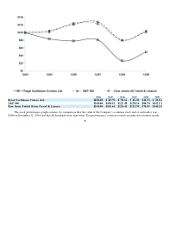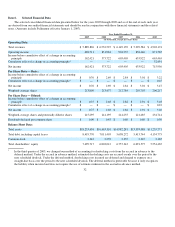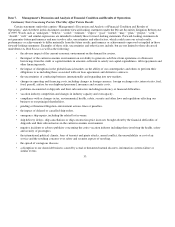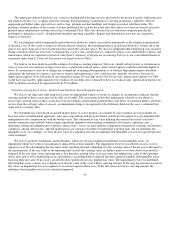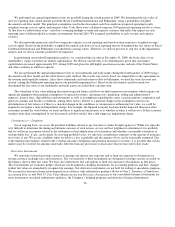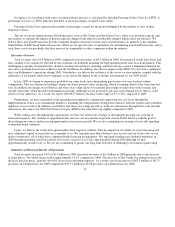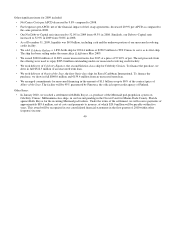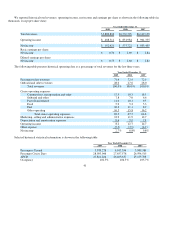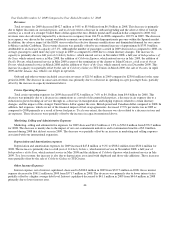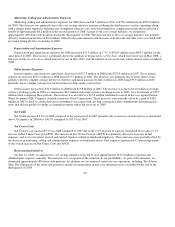Royal Caribbean Cruise Lines 2009 Annual Report Download - page 47
Download and view the complete annual report
Please find page 47 of the 2009 Royal Caribbean Cruise Lines annual report below. You can navigate through the pages in the report by either clicking on the pages listed below, or by using the keyword search tool below to find specific information within the annual report.
We enter into foreign currency forward contracts and interest rate, cross-currency and fuel swaps with third party institutions in
over-the-counter markets. We estimate the fair value of our foreign currency forward contracts and interest rate and cross-currency
swaps using expected future cash flows based on the instruments’ contract terms and published forward curves for foreign currency
exchange and interest rates. We apply present value techniques and LIBOR-based discount rates to convert the expected future cash
flows to the current fair value of the instruments.
We estimate the fair value of our fuel swaps using expected future cash flows based on the swaps’ contract terms and forward
prices. We derive forward prices from forward fuel curves based on pricing inputs provided by third-party institutions that transact in
the fuel indices we hedge. We validate these pricing inputs against actual market transactions. We apply present value techniques and
LIBOR-based discount rates to convert the expected future cash flows to the current fair value of the instruments. We also
corroborate our fair value estimates using valuations provided by our counterparties.
We estimate the fair value of fuel call options using standard option pricing models with inputs based on the options’ contract
terms, such as exercise price and maturity, and data either readily available or derived from public market information, such as fuel
curves, volatility levels and discount rates. We corroborate our fair value estimates using valuations provided by our counterparties.
We adjust the valuation of our derivative financial instruments to incorporate credit risk, when applicable.
We believe it is unlikely that materially different estimates for the fair value of our foreign currency forward contracts and
interest rate, cross-currency and fuel swaps and options would be derived from using other valuation models, assumptions, inputs or
conditions suggested by actual historical experience.
Terminology
Our revenues are seasonal based on demand for cruises. Demand is strongest for cruises during the Northern Hemisphere’s
summer months and holidays.
Our revenues consist of the following:
Passenger ticket revenues consist of revenue recognized from the sale of passenger tickets and the sale of air transportation to
and from our ships.
Onboard and other revenues consist primarily of revenues from the sale of goods and/or services onboard our ships not included
in passenger ticket prices, cancellation fees, sales of vacation protection insurance, pre- and post-cruise tours, Pullmantur’s land-based
tours and hotel and air packages. Also included are revenues we receive from independent third party concessionaires that pay us a
percentage of their revenues in exchange for the right to provide selected goods and/or services onboard our ships.
Our cruise operating expenses consist of the following:
Commissions, transportation and other expenses consist of those costs directly associated with passenger ticket revenues,
including travel agent commissions, air and other transportation expenses, port costs that vary with passenger head counts and related
credit card fees.
37


